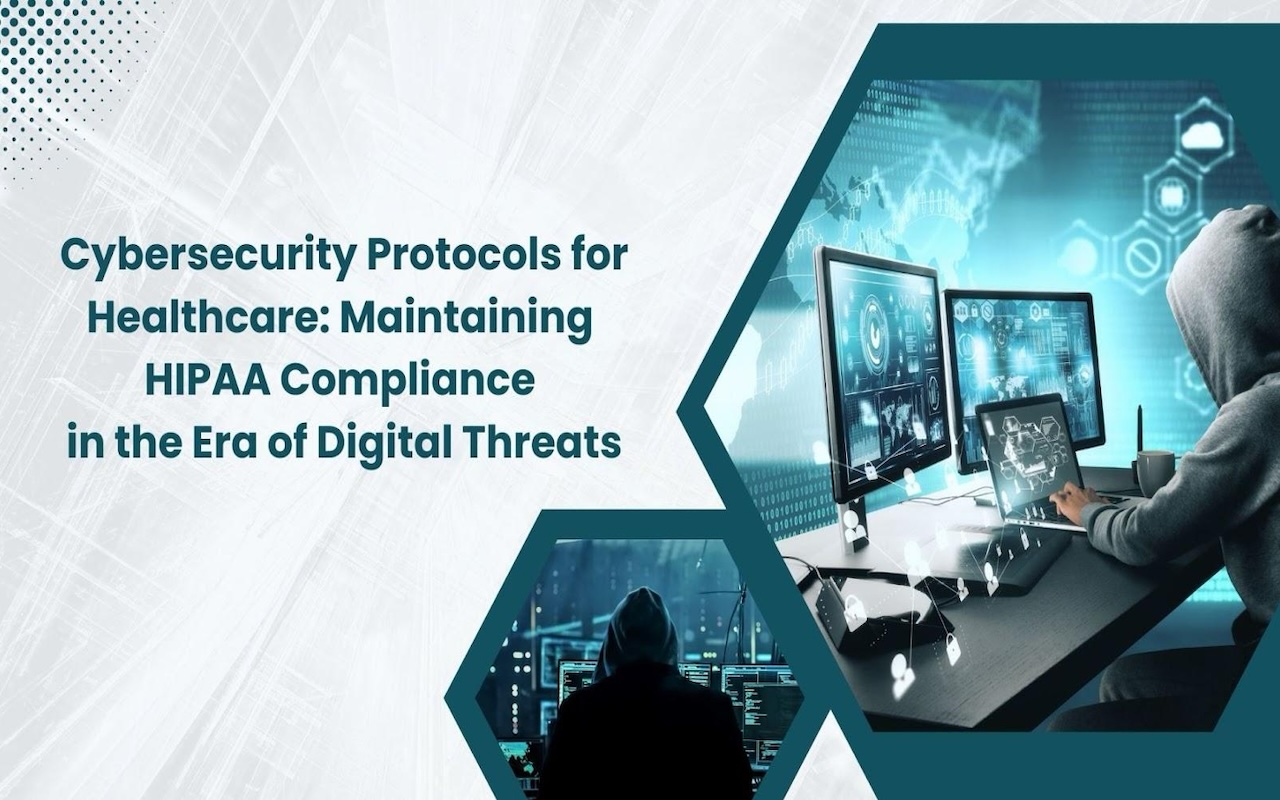
HIPAA compliance demands robust cybersecurity due to the rise of connected devices, telemedicine, and electronic health records. Traditional security methods are insufficient against evolving threats. Healthcare providers must adopt advanced cybersecurity strategies to safeguard patient privacy, protect PHI, and ensure compliance amidst dynamic online risks. This essay explores key approaches for effective cybersecurity.
Navigating the Evolving Cyber Threat Landscape in Healthcare
Increasing Complexity of Cyberattacks
The healthcare sector faces constant threats from cybercriminals employing advanced tactics like ransomware, phishing, and APTs. Recent breaches, such as the 2024 UnitedHealth data breach impacting 190 million individuals, highlight the growing risk. Healthcare organizations must prioritize cybersecurity, as cybercriminals exploit vulnerabilities in outdated systems, unsecured endpoints, and weak access controls.
Threats from Outdated Technology and IoMT Devices
Hackers can easily target healthcare facilities, as many still rely on outdated systems that lack essential security safeguards. When vulnerabilities are not properly patched, cybercriminals can exploit outdated software, putting sensitive patient data at risk. Securing all connected endpoints is crucial, especially with the growing adoption of technology in healthcare, including the Internet of Medical Things (IoMT) devices, which significantly expand the attack surface.
Essential Cybersecurity Procedures for HIPAA Compliance
HIPAA establishes strict guidelines for safeguarding patient data in both digital and physical formats. Although healthcare organizations must also protect paper data, the focus here will be on the digital realm, where the majority of breaches take place. To be in compliance with HIPAA, healthcare organizations need to follow some crucial cybersecurity guidelines.
Implementing Strict Access Controls
Access controls form the backbone of a secure system when handling PHI. Implementing stringent access policies enables healthcare organizations to drastically reduce the chances of unauthorized data breaches. Multi-factor authentication (MFA) enhances protection by requiring two or more verification steps, such as passwords, biometrics, or one-time codes, preventing unauthorized access.
Role-Based Access Control (RBAC) limits data access based on job roles, ensuring employees only access necessary information. For instance, nurses view medical histories, while administrators handle billing records and patient financial information. These measures strengthen security, safeguard sensitive data, and minimize risks of breaches within healthcare organizations.
Data Encryption and Secure Communication
Data encryption is essential to protect PHI, both when it is stored (data at rest) and during transmission (data in transit). Advanced encryption algorithms, such as AES-256 (Advanced Encryption Standard with a 256-bit key), ensure that even if data is intercepted, it cannot be read or tampered with. Similarly, using Transport Layer Security (TLS) 1.2 or higher ensures that all data transmitted over networks, including emails, is encrypted and secure against unauthorized access.
Healthcare professionals often need to exchange sensitive information. Using HIPAA-compliant, end-to-end encrypted messaging tools ensures that all communications, whether between providers or with patients, remain private and protected. These platforms encrypt messages so that only the intended recipient can read them, further reducing the likelihood of data breaches.
Constant Observation and Incident Response
Threat detection systems: Since cyberattacks are always changing, it is crucial to monitor them in real-time. Advanced threat detection systems that can recognize irregularities and possible risks as soon as they arise should be implemented by healthcare organizations. Security information and event management (SIEM) and intrusion detection systems (IDS) can offer proactive monitoring, allowing security teams to react quickly to questionable activity.
Incident Response Plan: Data breaches can still happen even with the best precautions. It is essential to have a thorough incident response plan in place. Identifying the breach, containing it to prevent more harm, informing impacted parties and government agencies as required by HIPAA, and recovering from the breach should all be included in this strategy. Damage can be greatly minimized and activities can be restored with little interruption if an event response is done well.
Frequent Audits and Risk Assessments
Regularly evaluating an organization’s cybersecurity posture is essential for identifying vulnerabilities and ensuring compliance. Conducting routine security audits allows organizations to identify gaps in their security protocols and address them promptly.
Third-party audits, such as penetration testing, can also provide an external perspective on an organization's security measures. These audits help identify weaknesses that internal teams might overlook and can be invaluable in fine-tuning security strategies.
Programs for Employee Awareness and Training
Initiatives for Cybersecurity Education: One of the largest cybersecurity threats in the healthcare industry is still human mistakes. To teach staff members about phishing scams, social engineering techniques, and the best ways to protect patient data, organizations must put in place continuous cybersecurity training programs.
Creating a Culture Aware of Security: Establishing a culture of security awareness motivates staff members to report suspicious activity and maintain vigilance. Organizations should establish clear cybersecurity policies and regularly conduct assessments and attack simulations to ensure ongoing compliance.
Risk Management for Vendors
Many healthcare organizations rely on external providers for software services, cloud storage, and billing. However, outsourcing introduces potential cybersecurity risks. Businesses must assess vendors’ security protocols and ensure they comply with HIPAA regulations to protect sensitive data. For instance, providers offering ABA billing services must adhere to stringent security measures to safeguard patient information.
Business Associate Agreements (BAAs) must contain provisions requiring vendors to uphold HIPAA compliance. Third-party vendors, including those handling ABA therapy billing, are subject to routine audits and risk assessments to ensure they follow data protection guidelines.
HIPAA regulations are often updated by regulatory bodies to address emerging cybersecurity threats. Healthcare organizations need to keep up with policy changes and proactively implement suggested security measures. Healthcare providers may improve security and stay in compliance with HIPAA by implementing best practices including network segmentation, AI-driven threat analysis, and zero-trust security models.
Technology's Contribution to Improving Cybersecurity
Technology is essential to bolstering cybersecurity protocols in the medical field. Healthcare organizations are becoming increasingly adept at identifying and reducing risks thanks to developments in machine learning (ML) and artificial intelligence (AI). Security systems driven by AI can spot odd patterns of behavior and indicate possible breaches before they become more serious. Machine learning algorithms are a vital tool in today's rapidly changing cybersecurity environment because of their ability to continuously adapt to new threats.
Healthcare organizations should invest in endpoint protection, intrusion detection systems, and next-gen firewalls to effectively defend their networks and devices against external threats. Healthcare providers can also react swiftly to possible threats by utilizing a security information and event management (SIEM) system, which offers real-time security alert analysis.
Conclusion
Maintaining HIPAA compliance requires a comprehensive, proactive approach to cybersecurity. By implementing strong access controls, encryption standards, continuous monitoring, regular audits, and fostering a security-conscious organizational culture, healthcare providers can significantly reduce the risk of data breaches and stay compliant with HIPAA's strict privacy and security requirements.
Share this post
Leave a comment
All comments are moderated. Spammy and bot submitted comments are deleted. Please submit the comments that are helpful to others, and we'll approve your comments. A comment that includes outbound link will only be approved if the content is relevant to the topic, and has some value to our readers.

Comments (0)
No comment